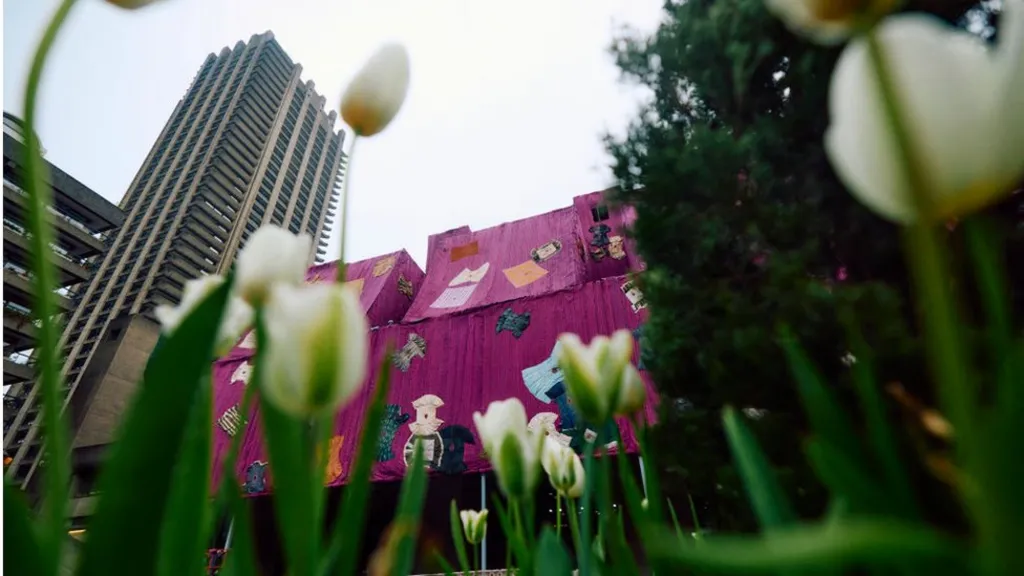The Barbican Centre has been swathed in magenta fabric for an exhibition using traditional Ghanaian robes.
Artist Ibrahim Mahama’s work, Purple Hibiscus, spans about 2,000 sq m and is hand-embroidered with more than 130 batakaris.
The robes were worn by Ghanaian kings and are often saved by families over generations.
Mahama collaborated with craftspeople from Tamale where the colossal panels were woven and sewn by hand.
Getty Images BarbicanGetty Images
Ibrahim Mahama believes all Ghanaians should have the opportunity to interact with the arts
BENJAMIN CREMEL BarbicanBENJAMIN CREMEL
Traditional robes are incorporated into the purple fabric
Named after Chimamanda Ngozi Adichie’s 2003 novel, the components of Purple Hibiscus were collected through a process of exchange and barter from communities across Northern Ghana.
The pieces are so large that, on days when matches were not taking place, the artist rented out the Tamale football stadium so the work could be spread out on the floor as it was sewn by hundreds of women from local sewing collectives.
Ibrahim Mahama Tamale stadiumIbrahim Mahama
The Tamale football stadium was used so that the huge work could be spread out on the floor while it was put together
The huge artwork weighs a total of 20 tonnes and was hung on the central London building using a system of straps, ratchets and weights.
Its fabric panels are fitted closely to the building in order to avoid issues around noise and wind.
Barbican BarbicanBarbican
The artwork was put into place using winches, straps and weights
The artist said the work signified his “interest in the lifecycles of textiles and what can be learnt from the historical memories embedded within them”.
He added: “Worn, degraded and bearing traces of years of use, these smocks are testaments to the endurance of traditional belief systems, and the continued relevance of intergenerational knowledge.”
Ibrahim Mahama Tamale stadiumIbrahim Mahama
Sewing collectives in Ghana stitched the piece together
Batakaris were worn by ordinary men as well as kings, and in the 19th Century, Ashanti military forces used them as a war dress.
Made from cotton and covered with leather pouches and metal cases that contained talismans, as it was believed by the Ashanti forces that this variant of the batakari was bulletproof.
Ibrahim Mahama Tamale stadiumIbrahim Mahama
The fabric begins as strips which are then joined together
Mahama’s piece is part of a bigger project at the Barbican called Unravel: The Power and politics of Textiles in Art.
The group exhibition contains works from 50 international artists using textiles, fibre and thread to “reimagine the world”.
The free installation can be seen on the lakeside terrace of the brutalist building from Wednesday until 18 August.
